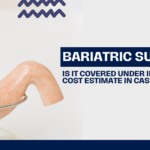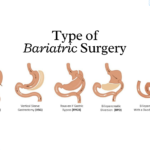
Understanding Hip Pain at Night
Hip pain while sleeping can significantly disrupt the quality of sleep as well as the overall well-being of the individual. It is essential for effective management to have a thorough understanding of the causes and contributing factors of hip discomfort that occurs during the night. Pain in the hip that occurs during the night can be caused by a number of different conditions, such as arthritis, bursitis, tendonitis, muscle strains, and structural abnormalities. In addition, certain sleeping positions, such as lying on one’s side or lying on a mattress that does not provide adequate support, can actually make hip pain worse. Additionally, underlying medical conditions such as osteoarthritis or hip joint degeneration may be a contributing factor in the discomfort experienced during the nighttime hours. Individuals are able to implement targeted strategies to alleviate discomfort and improve the quality of their sleep if they have a better understanding of the underlying causes of hip pain.
Maximising the Benefits of Sleeping Positions
It is possible to alleviate pressure on the hips and reduce discomfort during the night by adjusting the position in which one sleeps. There are a few different sleeping positions that may be more effective in relieving hip pain than others for people who are experiencing this condition. Reducing the amount of compression that occurs between the hips and alleviating the discomfort that is associated with side sleeping can be accomplished by lying flat on the back, which is also referred to as the supine position. The use of a pillow under the knees can provide additional support for the lower back and hips, thereby facilitating the alignment of the spine and reducing the amount of strain placed on the hip joints. In a similar vein, in order to maintain optimal hip alignment and alleviate pressure on the hips, side sleepers can benefit from placing a pillow between their knees instead of their pillows. Those who suffer from hip pain may find that experimenting with various sleeping positions and positioning of pillows is helpful in determining the most comfortable sleeping arrangement for them specifically.
The Importance of Pillows That Provide Support
In order to provide targeted support and alignment for the hips while sleeping, the utilisation of supportive pillows can be beneficial. When hip pillows are designed to provide support for the hips and pelvis, they can assist in the maintenance of correct spinal alignment and reduce the amount of pressure that is placed on the hip joints. Positioning a hip pillow between the knees can help alleviate discomfort for side sleepers who are experiencing hip pain. This is because the hip pillow prevents the legs from crossing and twisting the hips, which can cause discomfort. In addition, back pillows can bolster the lumbar region and assist in the maintenance of a neutral spine position when the individual is sleeping on their back. It is possible for individuals to create a comfortable sleeping environment that alleviates hip pain and improves the quality of sleep by strategically positioning supportive pillows in the appropriate positions.
Evaluating Mattress Quality
When it comes to providing support for the hips and facilitating restful sleep, the quality of your mattress is an extremely important factor. For the purpose of distributing body weight evenly and relieving pressure points, including those in the hips, a supportive mattress that is sufficiently firm can be of great assistance. It is recommended that when looking for a mattress to alleviate hip pain, you choose one that is medium-firm to firm in firmness. This type of mattress offers adequate support while also conforming to the natural curves of the body. Mattresses made of memory foam and hybrid mattresses that have pocketed coils can provide individuals who suffer from hip pain with the ideal combination of support and comfort. Additionally, because mattresses have a tendency to lose their supportive properties over time, it is important to replace your mattress on a regular basis every six to eight years. This will ensure that you have the best possible hip support and sleep comfort. When it comes to improving the quality of sleep and promoting hip health, making an investment in a mattress of high quality is absolutely necessary.
Pre-Bedtime Relaxation Techniques
Incorporating relaxation techniques prior to going to bed can assist in reducing hip stiffness and tension, thereby promoting a more comfortable experience while sleeping. It is possible to alleviate discomfort during the night by taking a warm bath or shower before going to bed. This will help relax the muscles that surround the hips and increase blood flow to the area during the night. In addition, engaging in yoga poses or gentle stretching exercises that focus on the hip muscles can assist in the release of tension and the improvement of flexibility. Exercising deep breathing and practicing mindfulness meditation are two additional methods that can help reduce stress and promote relaxation, both of which may be factors that contribute to hip pain. It is possible to alleviate hip discomfort during the nighttime hours and prepare your body and mind for restorative sleep by incorporating pre-bedtime relaxation techniques into your nightly routine.
Ergonomic Workspace Setup
It is possible to avoid hip stiffness and discomfort while sleeping by engaging in gentle exercises and moving around regularly. Living a sedentary lifestyle and sitting for long periods of time can both contribute to hip pain by causing tightness in the muscles and stiffness in the joints. In order to mitigate the impact of these effects, you should make it a priority to include regular physical activity in your daily routine. Low-impact exercises like walking, swimming, or cycling can help improve hip mobility and strengthen the muscles that surround the hip joints. These exercises can also help strengthen abdominal muscles. In addition, engaging in gentle stretching exercises that focus on the hip flexors, hamstrings, and glutes can be of assistance in reducing discomfort and alleviating tension. The prevention of hip stiffness and the promotion of overall hip health can also be accomplished by taking brief breaks throughout the day to stretch and move around. Your hip flexibility can be improved, pain can be reduced, and the quality of your sleep can be improved if you make movement and exercise a priority.
Seeking Professional Guidance
During extended periods of sitting, it is essential to create an ergonomic workspace in order to reduce the amount of hip pain experienced. Hip discomfort can be caused by improper sitting posture and ergonomics that are not adequate. These factors place an excessive amount of strain on the hip joints and the muscles that surround them. It is important to ensure that your workstation is set up in an ergonomic manner in order to promote hip health while you are working at a desk. You should adjust the height of your chair so that your feet are firmly planted on the ground and your knees are bent at a right angle of ninety degrees. When you want to keep your spine in a neutral position and relieve pressure on your hips, you should sit in a chair that provides support and has lumbar support. When you are seated, you should avoid crossing your legs because doing so can make hip pain worse and restrict blood flow to the lower extremities. You can reduce the amount of discomfort and strain on your hips that occurs during extended periods of sitting by designing your workspace in an ergonomic manner.
Seeking the Advice of Qualified Professionals
It is possible to receive individualised recommendations for the management of hip pain that occurs during the night by consulting with a healthcare provider or an orthopaedic specialist. In the event that hip pain continues to be experienced despite the implementation of self-care strategies, it may be an indication of an underlying medical condition that requires evaluation and treatment administered by a professional. An experienced medical professional is able to conduct a comprehensive evaluation of your symptoms, carry out diagnostic tests if they are required, and devise a treatment strategy that is specifically tailored to meet your individual requirements. Alternatives to treatment for



